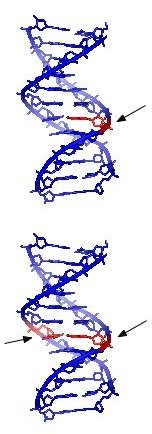What Is DNA? DNA Stands For Deoxyribose Nucleic Acid
What DNA is Made of
A DNA molecule contains all the information necessary to grow, build and maintain an organism. First discovered in 1869 by Frederick Miescher, it’s fundamental to our understanding of basic genetics. Tucked away inside are the chemical instructions to make proteins that go on to produce the tissues, structures and chemicals that all known living organisms require. So let’s break it down - DNA stands for Deoxyribose Nucleic Acid. Deoxyribonucleic acid is a phosphorous containing compound, as opposed to a protein which is a sulphur containing compound and the name refers to the chemicals that it consists of. Deoxyribose - This is a sugar, known chemically as a pentose, a five-carbon sugar. Nucleic - Refers to the location of DNA inside the nucleus. The molecule was originally called ’nuclein’ by Frederick Miescher, the man who discovered DNA in 1869. Acid - It is a phosphoric acid.
DNA structure
[caption id="" align=“alignnone” width=“600”]
If you were able to see a DNA molecule you would observe what looks like a long twisted ladder. The backbones of this ladder, the two long chains that the rungs are attached to, are composed of phosphate and sugar residues. A phrase in common use when referring to this part of the DNA structure is the sugar phosphate backbone. The rungs of this molecular ladder are the nitrogenous bases and there are four different kinds - Adenine (abbreviated as A), Guanine (G), Cytosine (C) and Thymine (T). There is one set of bases (rungs) attached to each of the long sugar phosphate chains. A base on one side of the DNA molecule is attached to a corresponding base by a strong hydrogen bond. This also gives the DNA molecule some stability.
Nucleotides and Nucleosides
There are two other phrases which are useful to know when talking about DNA, and they are nucleotides and nucleosides. A nucleotide is the collective term given to a nitrogenous base, joined to a sugar group and a phosphate group. A nucleoside is the collective term given to a nitrogenous base, joined to a sugar group. Oh, and you might here another phrase, polynucleotide. That’s just a long chain of nucleotides that are linked together. So where do genes fit into all of this? The simplest way of defining a gene is as a particular sequence or chunk of DNA that has the biological and chemical instructions to make a protein. A gene will consist of bases (rungs) attached to the sugar phosphate backbones, and they can vary in size from a few hundred bases to several million.
